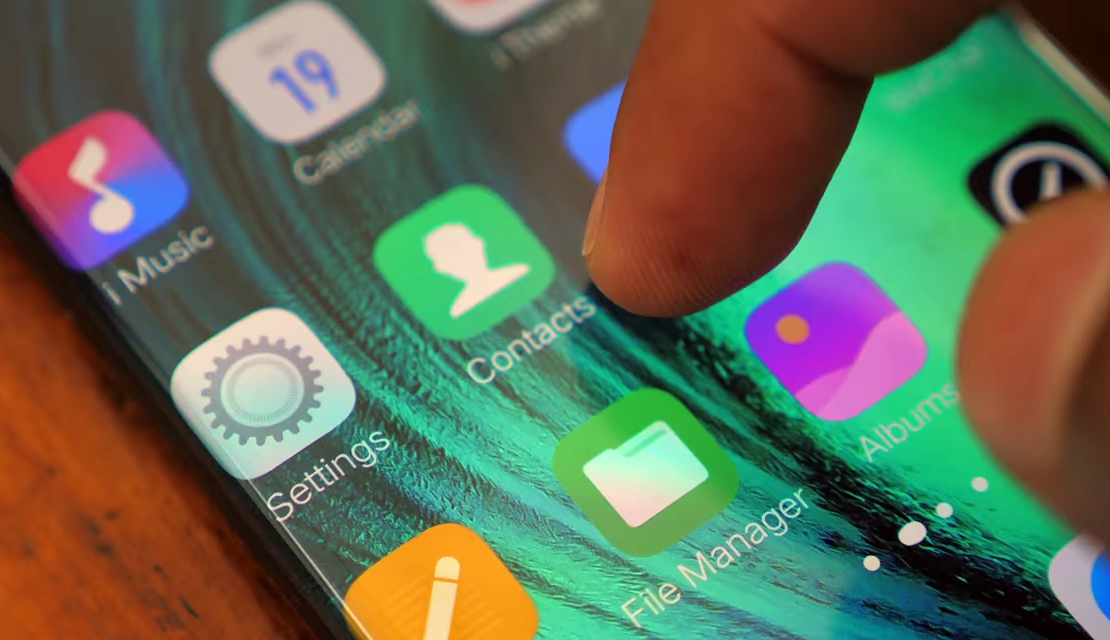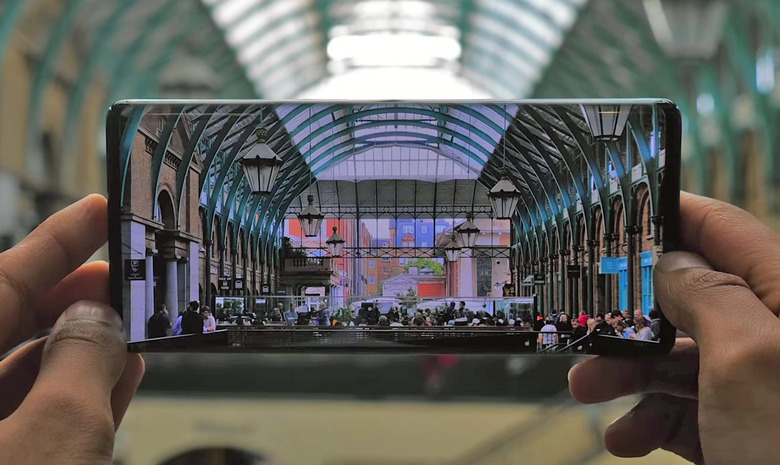Early Video Review Shows Off An Unreleased Flagship Phone Like Nothing You've Seen Before
Samsung spent mountains of cash on catchy anti-Apple marketing to propel it to the top of the smartphone industry. Yet even when it got to the top, the company's smartphones weren't actually all that good; it's amazing what spending tens of billions of dollars on advertising can do. The company's earliest smartphones were a travesty, but things improved when Samsung began shamelessly copying Apple's iPhones in every way it possibly could. Even still, Samsung's lineup of Galaxy flagship phones felt cheap and plasticky until the company eventually relented and began using premium materials in place of flimsy plastic.
Now, in 2019, Samsung makes some of the best flagship smartphones on the planet. The latest examples are the Galaxy Note 10 and Galaxy Note 10+, which features the company's newest Infinity-O display and its tiny hole-punch camera. While the hole-punch selfie cam is cool, the defining characteristic of Samsung's Infinity display is still the gorgeous curved edges on either side. They look great, they feel great, and they result in bezels that almost completely disappear. Almost...
Samsung is a bit stuck on its Infinity display design right now. It's not as stuck as Apple, which will continue to include a massive notch on its iPhone 11 series phones in 2019 because it doesn't yet have the tech needed to hide its TrueDepth camera sensors under the screen. But it is stuck — Samsung's flagship Galaxy phones have had almost the same Infinity design for years now.
While Samsung cut its teeth ripping off Apple's iPhones, the tables have now turned and a number of companies have started to copy Samsung's Infinity screens over the past couple of years. Here in the United States, the best-known example of this is likely the OnePlus 7 Pro that launched earlier this year. There are plenty of Chinese phone brands that aren't as well known in the US that have also copied Samsung's curved design. But now, it appears as though they've moved from copying Samsung to besting Samsung.
Outside of the US, the upcoming Vivo NEX 3 flagship phone has been creating a ton of buzz as details have leaked out ahead of launch. That trickle of leaks became a rushing river on Wednesday morning because a YouTuber managed to get his hands on a Vivo NEX 3 and he released a full video review. Well, we can't exactly call this a leak since it was quite obviously arranged by and approved by Vivo. Still, this marketing video is our first in-depth look at the new NEX 3 that everyone has been buzzing about.

What's so special about the Vivo NEX 3? Well, it's a powerful flagship smartphone with cutting-edge specs and support for 5G connectivity, but there's one feature in particular that people can't stop talking about. That's right, the display. As you can see in the images above and at the top of this article, the Vivo NEX 3 has a screen that takes Samsung's Infinity display concept to a whole new level.
A video is worth a thousand words so we won't spend too much time describing how the beautiful OLED screen spills over the sides of the phone and extends halfway around to the back. But we will say that the result is an immersive experience that's unlike anything you've seen before, and it's truly awesome. Check it out in the video embedded below.
